new web: http://bdml.stanford.edu/pmwiki
TWiki > Rise Web>ClimbingRobot > RobotSimulation > ContactModeling > AdhesionModels > AdhesionTesting>YZAdhesionTesting3 (01 Sep 2006, DanielSantos? )
Rise Web>ClimbingRobot > RobotSimulation > ContactModeling > AdhesionModels > AdhesionTesting>YZAdhesionTesting3 (01 Sep 2006, DanielSantos? )
-- DanielSantos? - 31 Aug 2006

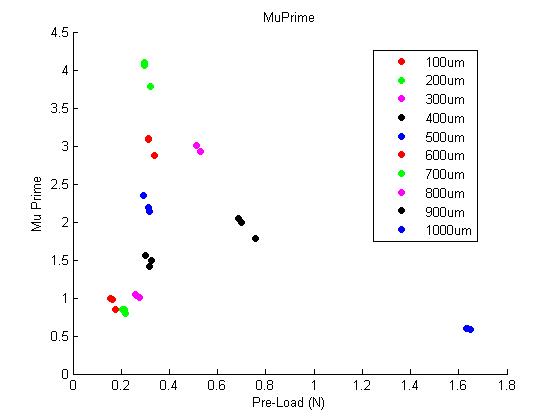
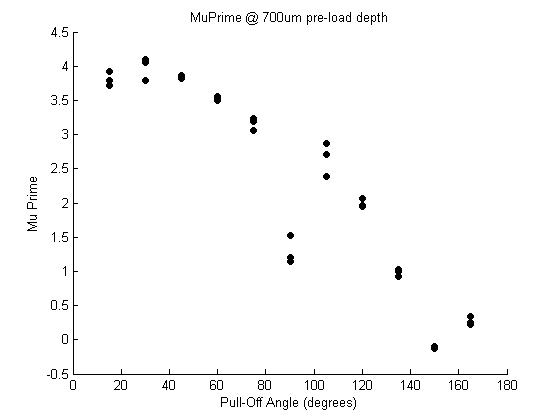
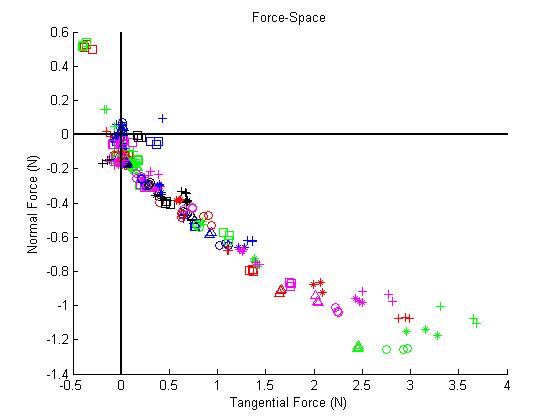
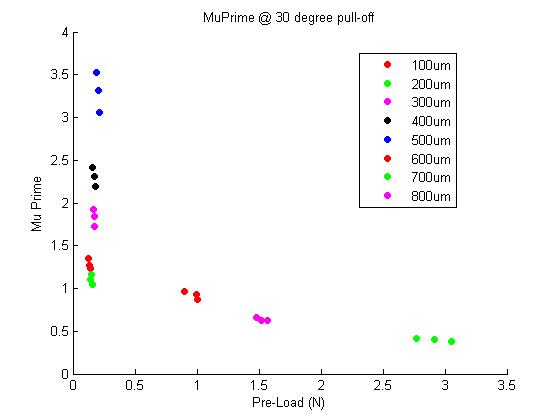
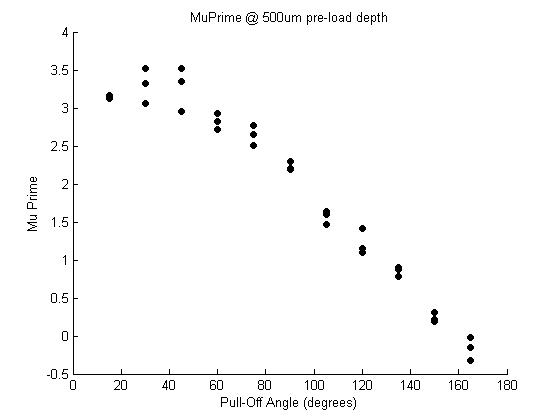
YZ Adhesion Testing 3
Test Setup
- 2-axis YZ stage.
- Control loop at 1kHz embedded on Microchip PIC18F2620?
- Control done using trajectory files with waypoints and linear interpolation
- Sampling force plate at 1kHz.
- Data filtered at 10 Hz using 3rd order Butterworth filter
Summary of results
mu' is the ratio between maximum preload and maximum adhesion; alpha is the angle relating maximum adhesion to shear under load: tan(alpha) = Fadhesion/Fshear (see K. Autumn et al., Frictional Adhesion paper for explanation).- See ScanningElectron? (Private web) for SEM pictures of long/short stalks
| sample | max adhesion (N) | mu' | max shear (N) | alpha (deg) | patch area (cm^2) | max adhesion (kPa) | max shear (kPa) |
| long stalks | 1.5 | 4 | 3.5 | 22.5 | 4.52 | 3.32 | 7.74 |
| short stalks | 1 | 3.5 | 3 | 18 | 3.77 | 2.65 | 7.95 |
Experiment #1
Procedure
- Pre-load along 45 degree approach angle to a specified depth in Z (0 to 1000um in 100um increments)
- Pull-off at specified angle (0 to 180 degrees in 15 degree increments; 0 = drag with curvature; 180 = drag against curvature)
Materials
- Sample - Directional Adhesive Pad, "Long"-type, #1A
- Sample - Directional Adhesive Pad, "Short"-type, #2A
- Substrate - Glass
Results for Sample 1A
- Measured maximum forces in Y and Z at pull-off (i.e. Limit Surface)

- Mu Prime as a function of Pre-Load @ best pull-off angle (30 degrees)

- Mu Prime as a function of Pull-Off angle @ best pre-load depth (700um)

Results for Sample 2A
- Measured maximum forces in Y and Z at pull-off (i.e. Limit Surface)

- Mu Prime as a function of Pre-Load @ best pull-off angle (30 degrees)

- Mu Prime as a function of Pull-Off angle @ best pre-load depth (500um)

Ideas, requests, problems regarding TWiki? Send feedback